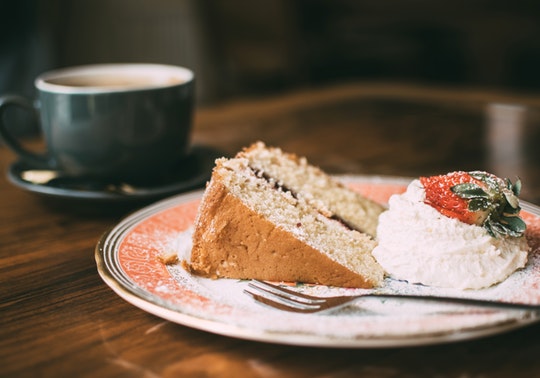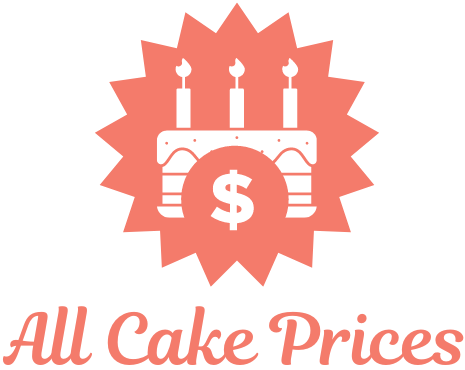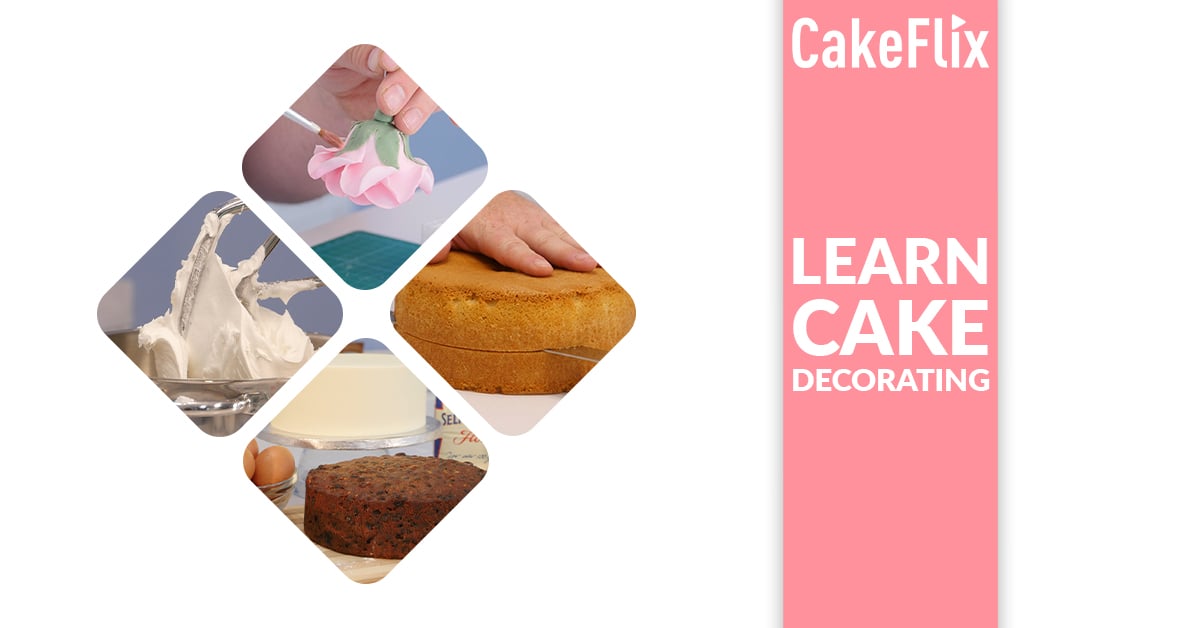If you’re a fan of the show the Great British Bake Off, you may hear the judges refer to the cake as the “sponge.” However what is sponge cake, specifically? After all, aren’t all cakes sponge-like in texture?
It turns out that there are many different types of sponge cake, but they all stem from a common ingredient: eggs. Although most cake recipes incorporate eggs, sponge cakes take things a step further, and that’s what makes them unique.
So What Is Sponge Cake?
A sponge cake is a cake that relies on beaten egg whites, or whole beaten eggs, for its signature fluffy, spongy texture. Well-beaten eggs are the secret to a good sponge cake.

What is sponge cake, and is there more than just one?
In contrast to butter cakes, which tend to be dense, sponge cakes are light and fluffy. This texture makes a sponge cake an excellent base for just about any dessert cake.
Sponge cakes tend to have just a few ingredients, including flour, eggs, and sugar. Traditional sponge cake recipes use just eggs, and no chemical leaveners, to help achieve that trademark texture. You can’t answer “what is sponge cake” without getting into the history of the dish.
Sponge cake recipes may or may not use additional fats like oil or butter. These cake recipes without extra fat will be drier than their fattier counterparts.
These drier cakes may be soaked with syrup to impart flavor and moisture during final cake assembly.
Some modern takes on the traditional recipe may add chemical leaveners like baking soda or baking powder. This helps to stabilize the structure, allowing for a fluffy cake with less fear of it collapsing.
Sponge cakes can come in a variety of shapes and sizes. Round, square, rectangular, and tube pans are all popular pan shapes for sponge cakes.
Rolled cakes like jelly rolls, Swiss rolls, and French roulades are sponge cakes baked in a thin layer on a sheet pan. The resulting flat cake is then filled and rolled to make a signature pinwheel shape when cut.
What Is Sponge Cake? Secrets to the Best Recipes
No matter the variant, making the perfect sponge cake is all about technique. Messing up even one piece of the puzzle can render your cake flat and gummy.

The majority of your cake’s volume will come from how much air you can whip into your eggs. To get the most volume out of your eggs, always start with your eggs at room temperature. Room temperature eggs whip up better and hold their foam better than cold eggs. The best way to get a room temperature egg is to set your eggs out approximately half an hour before you start assembling your cake. If you don’t have that much time to wait, dunk your eggs in warm (not hot) water for about five minutes before using.
Sugar not only sweetens the cake but also helps to stabilize the egg foam in your sponge cake. Be careful: Whipped eggs with large crystals of undissolved sugar will make for a poor cake. To ensure your egg whites whip well, use superfine sugar when making sponge cakes. As the name implies, superfine sugar crystals are smaller than other sugar crystals, making it easier to incorporate them into the egg whites.
Treating your ingredients right is just one part of proper sponge cake technique. It helps to have the right tools to help you as you are constructing your cake.
When making a sponge cake, you need to incorporate as much air as possible into your eggs. Using an electric stand or hand-held mixer can make easy work of beating your egg whites.
You can also opt to whip your egg whites entirely by hand using a good balloon whisk.
Even if you choose to use an electric mixer, a balloon whisk is still good to have on hand to finish the job. Using a balloon whisk to finish beating your eggs can help prevent you from overbeating them. Overbeaten eggs can lead to an overly dry cake.
Sifting your dry ingredients through a sieve aerates your components and also breaks up lumps. You may want to sift twice to ensure maximum lift in your final cake.
Want some extra insurance for a smooth batter? Sift your ingredients twice during prep and then sift a final time into your waiting beaten eggs. This help will ensure you can achieve a silky smooth, fluffy batter.
Folding your dry ingredients into your beaten eggs is a crucial step. This technique is all about incorporating your dry ingredients with your beaten eggs while taking care not to deflate them.
Properly folding your ingredients together requires a good spatula. The spatula shape is ideal for cutting through your ingredients and also effectively scraping the bowl. Silicone is an excellent material for spatulas because it is easy to care for and clean.
When planning to make a sponge cake, try to use the most straightforward pan you have. A round or square pan will do nicely. Bundt pans are also popular. However, try not to use a pan that has a very intricate pattern. Intricate patterns may be difficult to de-pan after the cake bakes.
While you may be tempted to grease your pan to help your cake come out of the pan, I have some advice: Don’t do it. Egg foam cakes need a surface to which to adhere to help it rise.
Grease on the pan will prevent your sponge cake from rising. It will leave you with a sad baked mess after all your hard work. (I speak from experience!)
If you are worried about getting your cake out of the pan, use parchment paper. Parchment paper still allows a sponge cake to rise and you can easily peel it off after the cake finishes baking.
What Is Sponge Cake? Answers from Around the World
There are a variety of different types of sponge cake from all over the world. Here are some popular variants.

Genoise
The classic Genoise is a French sponge cake. This sponge cake recipe uses whole eggs beaten to the ribbon stage to aerate the batter and make it light and fluffy. It also uses butter for a little extra richness.
It is notorious for being a technically tricky cake to master. Having your eggs whipped to the proper consistency is one of the keys to a successful genoise. Even Rose Beranbaum, the author of the Cake Bible, admits that she has flubbed the cake by not beating the eggs enough.
Recipes will vary on how to achieve the proper texture. Some methods may stabilize the eggs using a water bath while others will advise you to whip the egg whites for a specified period.
Angel food
Angel food cake is a favorite American cake, thought to have originated in the early 1800s. It is a soft, sugary pillow of sweetness, most often baked in a tube pan. Angel food cake’s sweetness makes it a natural companion for fruits like strawberries.
The main component of an angel food cake is egg whites. Many recipes like this classic Angel Food Cake from Martha Stewart call for a whipping agent, specifically cream of tartar. This allows the egg whites to aerate well. Like some other sponge cake recipes, an angel food cake does not have any added fat.
Chiffon
The chiffon cake has a history steeped in Hollywood glitterati. The chiffon was developed in the 1920s by an insurance agent named Harry Baker, who made the cake exclusively for Hollywood stars.
General Mills bought and released the recipe from Baker in the 1948 book Betty Crocker Chiffon Cake Recipes and Secrets.
Chiffon cake is a moist, airy sponge cake. Two things set it apart from other traditional egg-based sponge cakes: The egg yolks and whites are whipped separately, and the cake uses vegetable oil as its fat component.
This modern sponge cake does incorporate baking soda into its recipe for extra leavening.
The moist interior of the chiffon cake makes it a beautiful base for a variety of different flavors. The famous Hawaiian Guava Chiffon Cake is just one example of the versatility behind the standard chiffon cake recipe.
Paper wrapped sponge cake
In bakeries all over Asia and in Asian communities around the world, you can find unique paper wrapped sponge cakes. These cakes, which are often smaller in size, come in a signature parchment paper cup, as their name suggests.
Like other sponge cakes, paper wrapped sponge cakes are egg-based, getting most of their leavening from beaten eggs. Some recipes may beat the eggs whole, while others beat the eggs separately.
Let Them Eat Sponge Cake
So, what is sponge cake? It is a delicious, fluffy base on which you can build your perfect dessert. Or you can eat it plain!
Mastering sponge cake recipes may be a bit more involved than other cake types. But all the work will be worth it when you are enjoying your delicious cake creation. Answering the question “what is sponge cake” was probably simpler than you thought.
Do you have a favorite type of sponge cake? Tell us your favorite type below in the comments!



